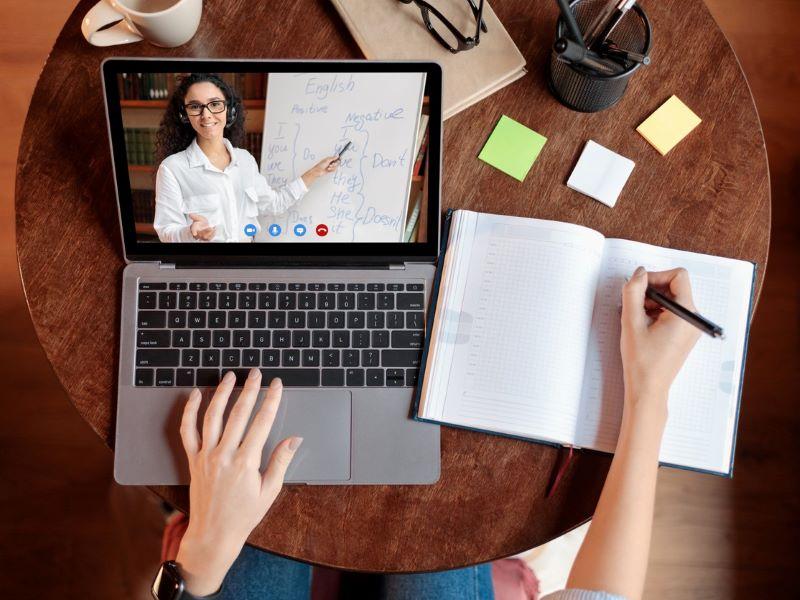
A quick guide to designing and delivering effective bite-sized learning

We’ve all heard about bite-sized learning as a method by which we can connect with informal learners and students in key topics in an engaging way. Bite-sized learning can allow for a more targeted and specific learning experience, presenting information in small, focused portions whereby learners can better absorb and process concepts without feeling overwhelmed. Although the benefits of bite-sized learning are widely discussed, many educators struggle with implementing this approach.
But how do we go about delivering it? This short guide addresses the challenges and offers guidance on creating engaging content, using technology tools, fostering active learning and personalising the learning experience.
1. Identify key learning outcomes
You’ve heard it before, but true to the start of any learning design phase is identifying your learning outcomes. Think about the core concepts or skills that need to be mastered, ensuring what you produce is concise and relevant, focusing on what matters most.
- An introduction to microlearning
- To block or not to block? How time affects learning in higher education
- Revolving roles: creating inclusive, engaging, participant-led learning activities
2. Structuring content for bite-sized learning
- Divide what you plan to deliver into logical mini-modules or micro-lessons. Think of this as a heavily condensed, yet light and bright lecture.
- Use a combination of text, visuals and multimedia to enhance engagement and avoid lengthy tomes.
- Provide context and real-world examples throughout by connecting the content to practical applications in order to increase relevance and understanding.
- Use free and open educational resources to embellish your content – there’s plenty to choose from – and keep one eye on copyright if incorporating other’s materials.
- Build in interactive elements such as quizzes or polls to promote active learning and reinforce concepts.
- Ensure seamless and intuitive navigation between these elements so that the learner isn’t jumping in and out of the core content backbone.
- Use storytelling techniques if you can by presenting information in a narrative format to captivate learners and facilitate information retention.
2. Leverage edtech tools
- If you’re publishing using a Learning Management System (LMS) you can use its features to build in tools such as learner progress tracking and performance assessment, alongside the standard educational support tools available within it – quiz types, polls and activities.
- Linking out to free content to embellish your work is fine, but, if you are using a purpose-built platform, you can edit short videos, images and interactive content to create an engaging multimedia learning object yourself.
- Ensure that whatever you do is mobile-friendly and accessible, and test what you make on any mobile devices you have to hand. This will ensure that you are catering to learners’ preferences for on-the-go learning.
- If you have no access to an LMS for publishing your content, consider delivering a simple animation, video or slideshow using free tools to support their development and publication.
3. Personalise the learning experience
Personalisation needn’t be complex. Basic quizzes and polls can pre-assess learner’s existing knowledge at the start, allowing you to tailor content for specific needs and to offer different pathways through it.
Ensure you provide options for learners to explore additional resources based on their interests and goals in the form of linking to more bite-sized learning, in-depth analyses of a subject or more intensive courses.
4. Give recognition for achievements
If there’s one thing that we know from our research on OpenLearn, it’s that learners want recognition for their learning, no matter how bite-sized it was. If your publishing platform allows, provide a digital badge or free certificate as recognition for learning, to boost confidence and to motivate your learners, be they students or the public.
Designing and delivering effective bite-sized learning experiences is essential for engaging today’s informal learners and students in higher education. By incorporating the strategies discussed, you can create learner-centric experiences that promote engagement, retention and application of knowledge.
As we count up the citations of our journal articles as a formal measure of success of our scholarly outputs, so the “shares” and “likes” of our bite-sized learning efforts are the endorsement of our ability to meet learners where they are.
Patrina Law, head of OpenLearn at The Open University.
If you would like advice and insight from academics and university staff delivered direct to your inbox each week, sign up for the Campus newsletter.


